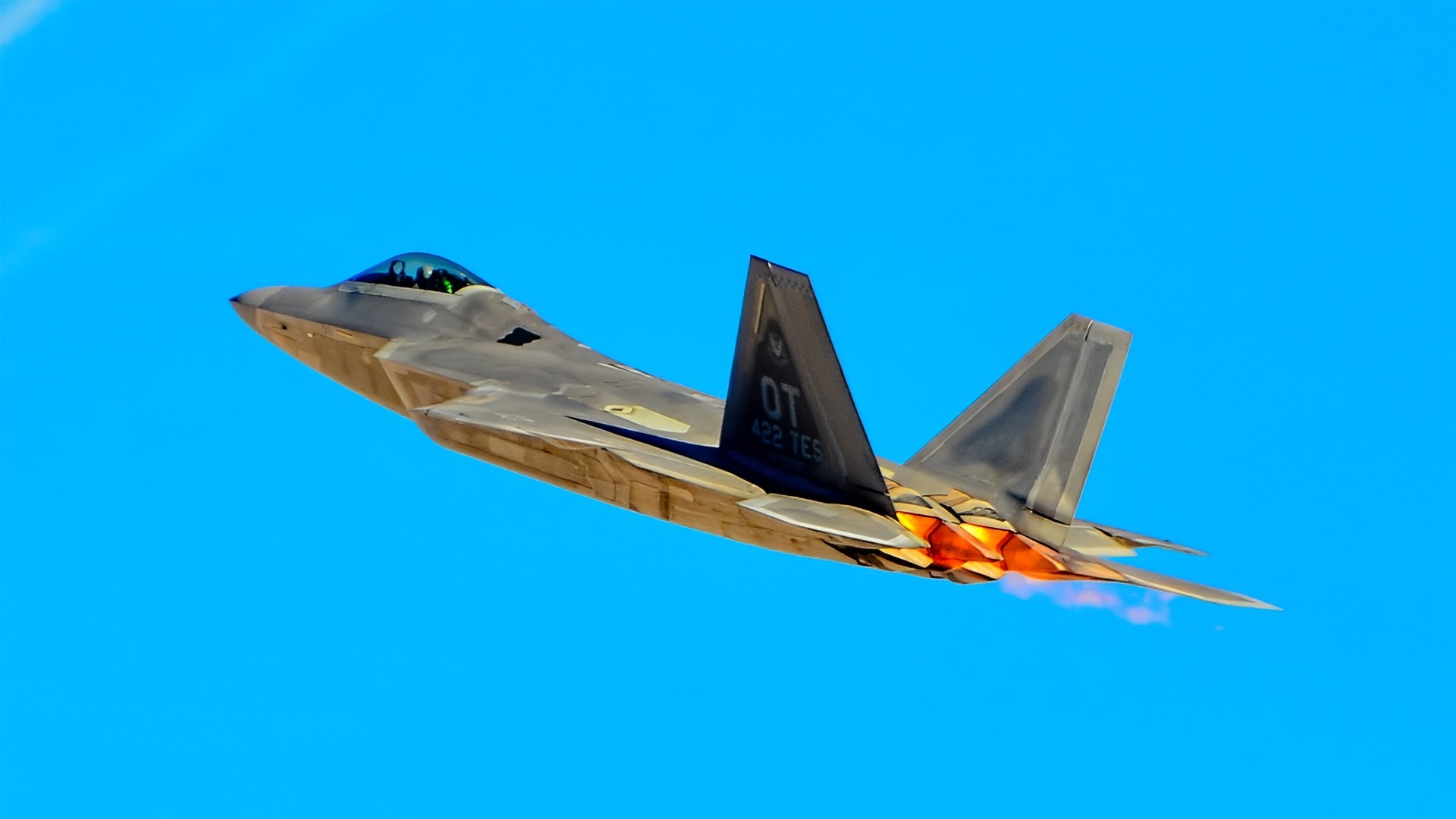Key Points and Summary – The U.S. F-22 and China’s J-20 were built for the same mission—win the air-to-air fight—but they come from different eras and design philosophies.
The Raptor pairs all-aspect stealth, supercruise, and thrust-vector agility with a mature sensor/weapon suite.
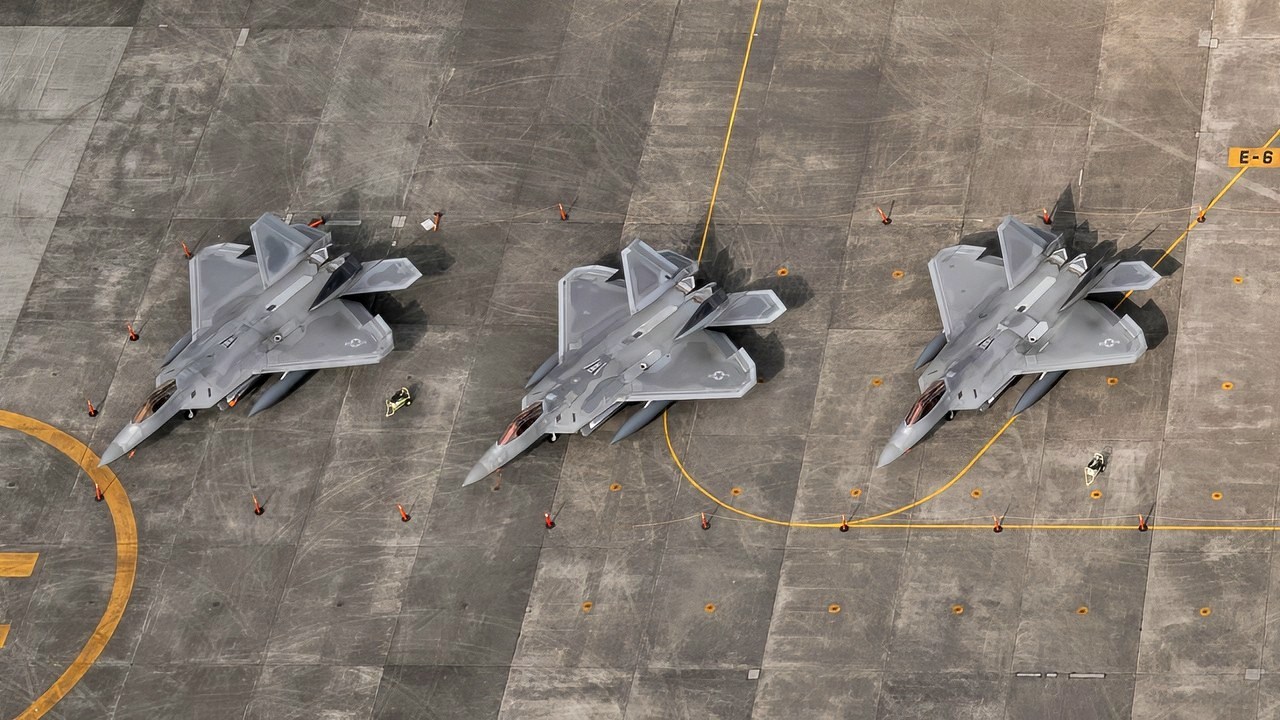
Eight U.S. Air Force F-22 Raptors from Joint Base Elmendorf-Richardson, Alaska, sit on the flightline, July 9, 2018, at Yokota Air Base, Japan. Eight F-22s evacuated from Kadena Air Base, Japan due to Typhoon Maria. The F-22 are deployed under U.S. PACOM’s theater security package (TSP) program, which has been in operation since 2004. (U.S. Air Force photo by Yasuo Osakabe)
The J-20 emphasizes long reach, a large radar, and very long-range missiles, with growing numbers and improving engines.
In an equal-pilot, neutral-range duel, the F-22’s stealth, sensors, and kinematics still give it the edge, especially at the merge.
In a real war, though, networks, numbers, and tactics matter as much as jets—and China’s rapid J-20 expansion changes that wider calculus.

J-20 with PL-15 Missile. Image Credit: Creative Commons.
F-22 vs. J-20: Who Wins a Stealth War?
Put the F-22 and J-20 side by side, and the design bets jump out.
The F-22 was the 1990s moonshot: stealth baked into almost every angle, with diamond-like wings, caret inlets, and canted tails tuned to stay “quiet” to radar from every direction. It was built to see first, shoot first, and leave before the enemy understands what happened.
China’s J-20 is newer and larger. It blends a big nose (room for a big active electronically scanned array—AESA—radar), a delta wing, and prominent fore-planes (canards) with low-observable shaping. Those canards are great for lift and control, tougher for stealth; China accepted that trade to prioritize range, payload, and high-alpha handling. The silhouette says “long-reach interceptor” more than “Raptor clone.”
Engines, Energy, and Agility
Propulsion sets the tone for any knife fight between the two stealth fighters. The F-22’s twin F119 engines give it true supercruise (supersonic flight without afterburner) and two-dimensional thrust vectoring.
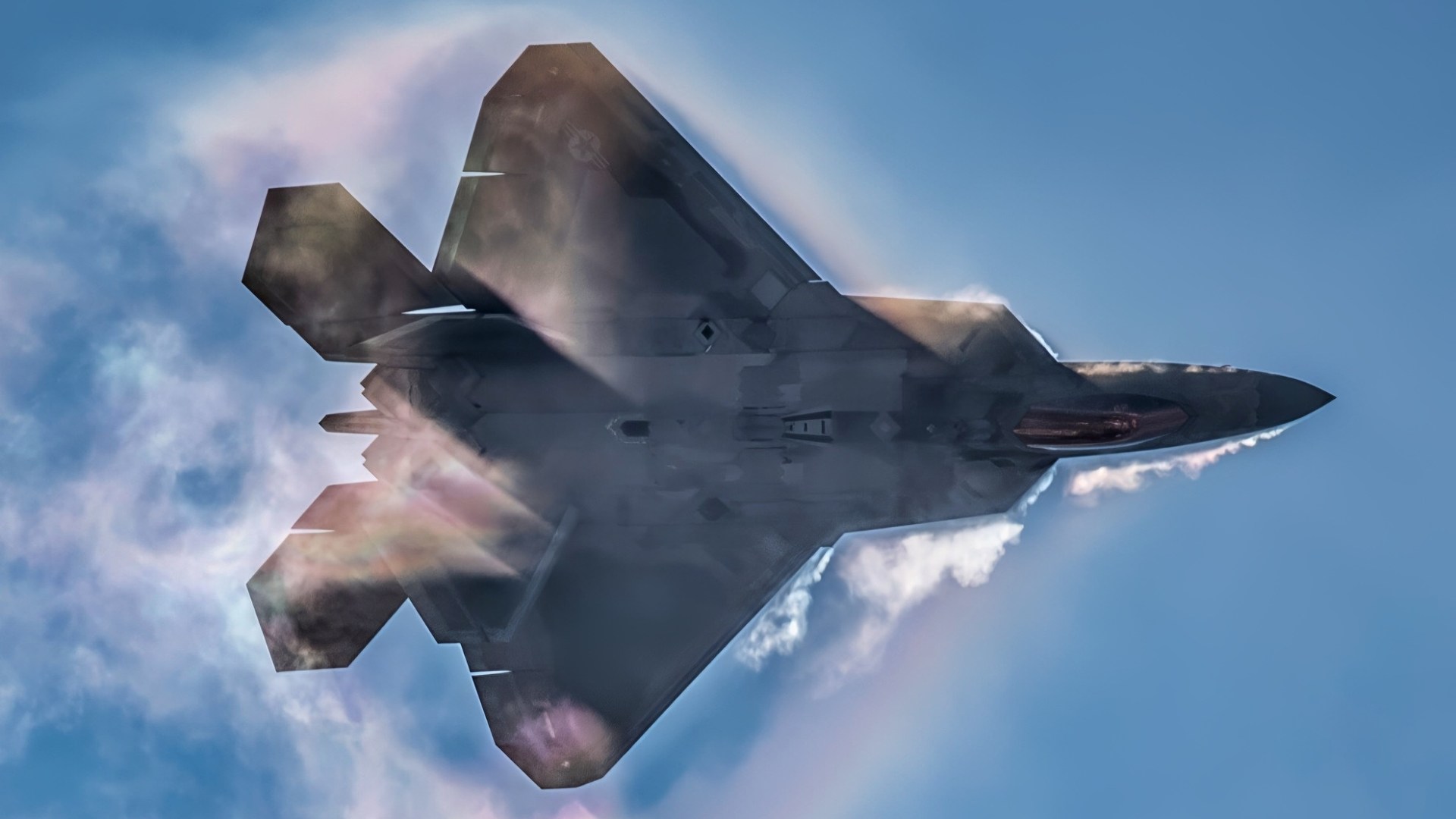
U.S. Air Force Maj. Josh ‘Cabo’ Gunderson, F-22 Raptor Demonstration Team commander, performs during an air show in Fort Worth, Texas, Oct. 17, 2020. The F-22’s raw power and thrust vectoring technology gives the aircraft super maneuverability in the air-to-air battlespace. (U.S. Air Force photo by 1st Lt. Sam Eckholm)
That doesn’t just wow airshow crowds—it lets a pilot sustain speed, reposition fast, and point the nose where it counts without bleeding energy.
For years, the J-20’s weak link was engines. Early jets flew with Russian AL-31s or interim Chinese WS-10s. That story is changing as the definitive WS-15 enters service, aiming to unlock better supercruise and climb.
China has also flight-tested thrust vectoring on a J-20 prototype.
The gap is narrowing, but the Raptor still starts with more thrust-to-weight and proven vectoring in frontline service.
F-22 vs. J-20: Sensors and the Kill Chain
Modern air combat is mostly about who knows first. The F-22’s APG-77 AESA radar, paired with a sensitive passive suite that listens for enemy emissions, feeds a fused picture that lets Raptor pilots sort and shoot without shouting their own presence. Continuous software upgrades and datalink improvements keep that edge sharp.
The J-20 brings a large AESA, a faceted chin electro-optical/infrared sensor for passive tracking, and distributed apertures around the jet for 360-degree awareness. China also introduced the two-seat J-20S, likely shifting some sensor-management and teaming tasks to a second crew member—useful for controlling drones or coordinating long-range missile shots. It’s a thoughtful evolution toward networked tactics.
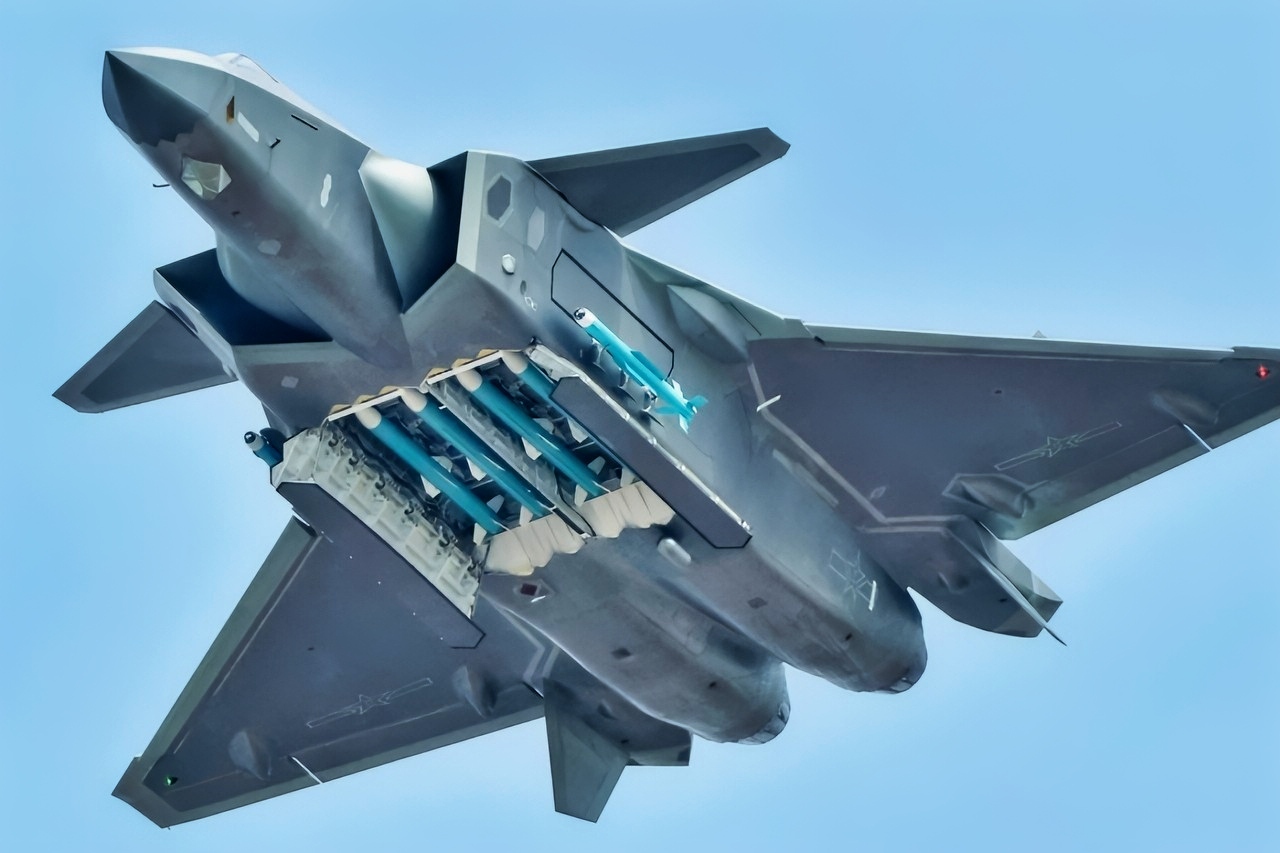
China J-20 Fighter with Missiles. Image Credit: Chinese Weibo.
Weapons: What You Carry—and How You Carry It
A stealth fighter’s calling card is its internal bay. The F-22’s standard air-to-air load is six AIM-120 AMRAAMs in the main bay plus two AIM-9s in the side bays. It can swap some AMRAAMs for small precision bombs, but air dominance is the core mission.
The J-20 typically carries PL-15 long-range missiles internally and PL-10 short-range, high-off-boresight missiles in slim side bays—roughly four PL-15s plus two PL-10s in baseline fit. China is working on thinner-body weapons and new racks to raise the internal count. In training, J-20s have also flown with external missiles when stealth isn’t required, trading signature for surge capacity.
Speed, Range, and the Geometry of First Shot
Both jets can dash in the Mach-2 class, but what matters is sustained energy where missiles are launched and defeated. The Raptor’s supercruise and clean, drag-light shaping let it set the terms of engagement.
The J-20 counters with a larger fuel load, a big radar, and very long-reach missiles meant to create first-shot chances from farther away. As WS-15 production scales, the J-20’s energy game likely improves, closing the kinematic gap.
The Missile Math
Missiles are the equalizer—and the uncertainty. The F-22 pairs its mature sensors with the latest AIM-120 updates, demonstrated in record-distance test shots. The J-20 hinges its long arm on the PL-15, a dual-pulse, active-radar missile designed to threaten support aircraft and fighters well before a merge.
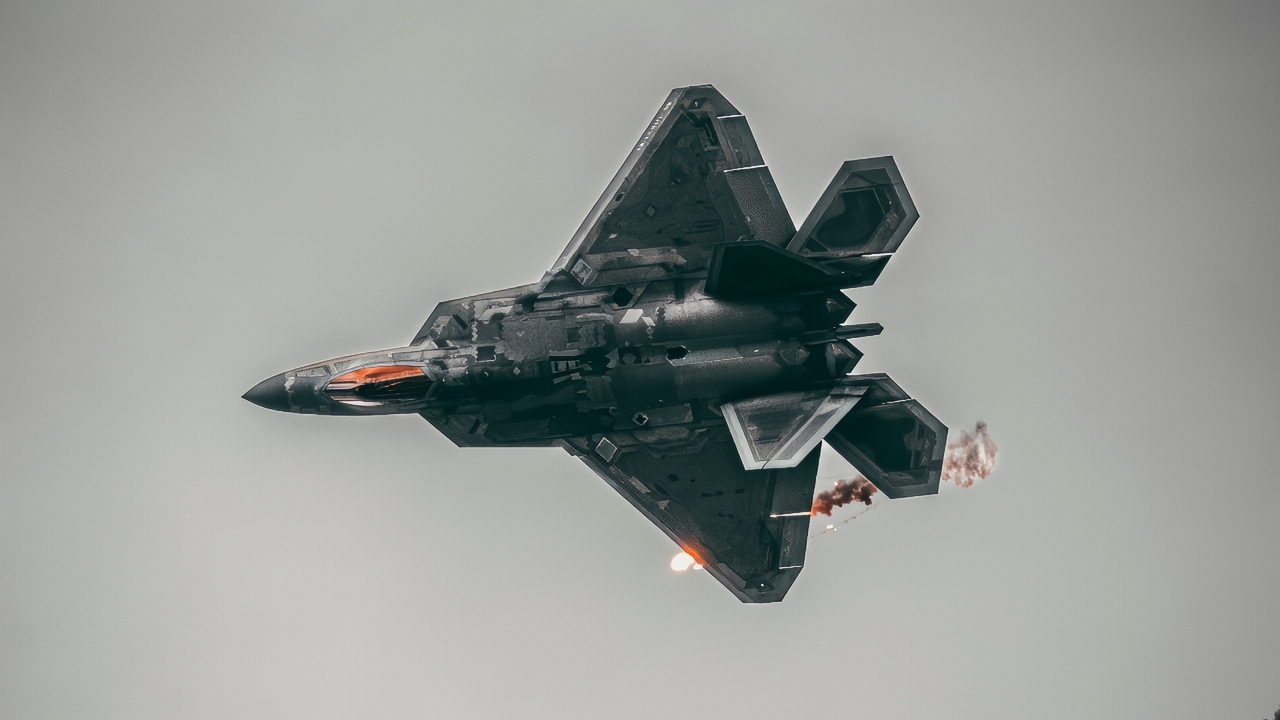
A U.S. Air Force F-22 Raptor performs a vertical climb during the 2025 Marine Corps Base Hawaii (MCBH) Kaneohe Bay Air Show, at MCBH, Aug. 9, 2025. The Kaneohe Bay Air Show provided an opportunity to showcase the aircraft, equipment, and capabilities of the armed forces in the Indo-Pacific region to the local community. The air show, which contained aerial performances, static displays, demonstrations, and vendors, was designed to celebrate MCBH’s longstanding relationship with the local community. (U.S. Army photo by Pfc. Peter Bannister)
If slimmer air-to-air missiles and six-round internal stacks arrive, the J-20’s first-salvo density rises—making the opening moments more dangerous for any opponent.
Training, Tactics, and Maturity
Raptor squadrons have spent almost two decades refining tactics in complex exercises.
That matters: stealth is an ecosystem—signatures, emissions discipline, maintenance, and playbook rigor. China, for its part, is rapidly expanding the J-20 force, fielding new units and building experience fast (helped by the two-seat variant).
Quantity brings training reps, and reps turn into competence. Still, the J-20 community is newer and learning in the open.
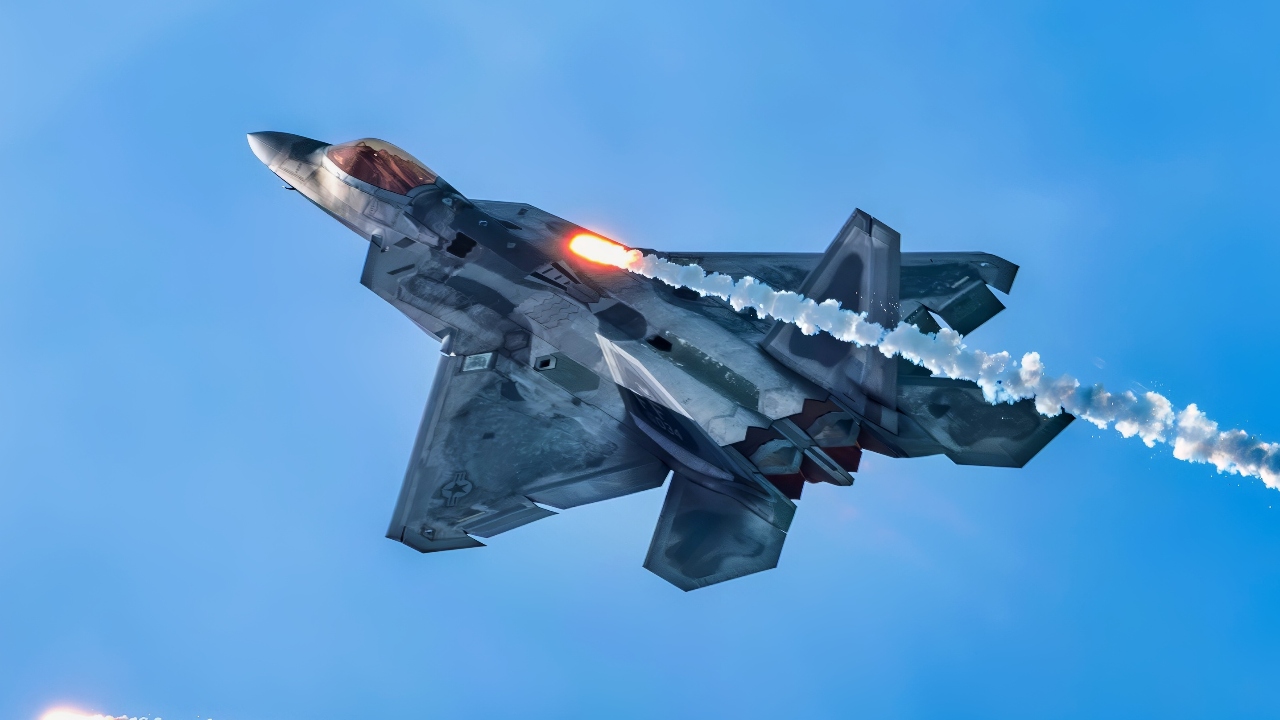
U.S. Air Force Capt. Nick “Laz” Le Tourneau, F-22 Raptor Aerial Demonstration Team commander, performs an aerial maneuver during the Cocoa Beach air show in Florida, July 12, 2025. The team joined the community in celebrating Cocoa Beach’s 100th anniversary, marking a century of coastal heritage and patriotic spirit, while showcasing the unmatched power, agility, and precision of America’s fifth-generation fighter and reinforcing public trust in the Air Force’s mission to fly, fight, and win. (U.S. Air Force photo by Staff Sgt. Lauren Cobin)
J-20 vs. F-22 Stealth Fighter War Who Wins in 4 Words: Depends on the Context
Freeze the world, drop one F-22 and one J-20 into a neutral patch of sky, give both pilots equivalent skill, and deny each outside help.
The betting favorite is still the F-22:
Detection and first shot: All-aspect stealth and emissions control make the Raptor harder to see early, opening more chances to take a clean first shot.
Energy and agility: Supercruise plus thrust vectoring let a Raptor steal geometry—turn cold after a shot, re-enter from a better angle, or survive a merge if it comes to that.
Mature fusion and weapons: Years of incremental software and datalink upgrades give the F-22 a proven end-to-end kill chain.
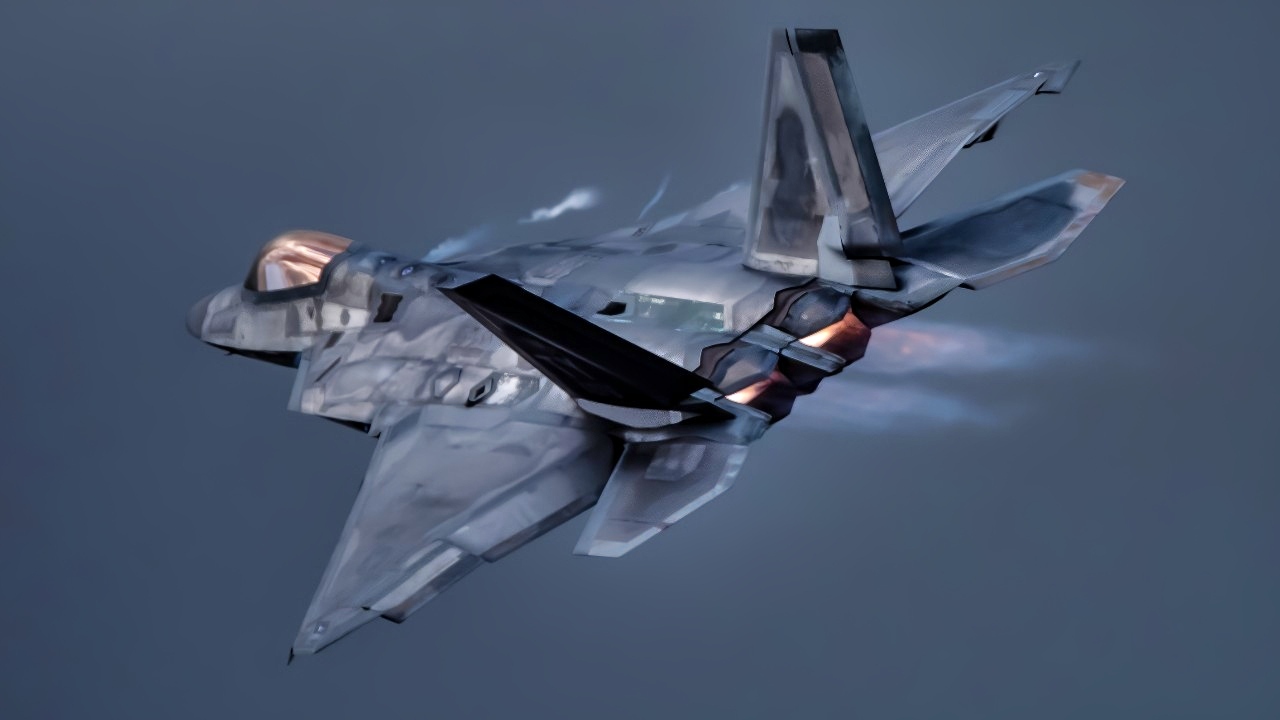
U.S. Air Force Maj. Josh Gunderson, F-22 Raptor Demonstration Team commander and pilot, flies a practice demo at Joint Base Langley-Eustis, Va., Dec. 6, 2019. Representing Air Combat Command, the F-22 Demo Team travels to air shows all across the world showcase the performance and capabilities of the world’s premier 5th-generation fighter. (U.S. Air Force photo by 2nd Lt. Sam Eckholm)
Could the J-20 flip the script? Yes—especially beyond visual range with a first look/first shot using its large radar and long-reach PL-15s, or if it arrives with superior numbers and off-board cueing. Add a second crew member in the J-20S to manage sensors and unmanned teammates, and its opening hand improves further. But duel for duel, pilot for pilot, the Raptor still stacks more advantages.
The Real Air War Isn’t a Duel
A tidy 1v1 is great for bar talk; reality is messy. Networks decide modern air combat. If the J-20 swims in a sea of Chinese sensors—ground radars, airborne warning planes, passive receivers—and the F-22 is trying to stay radio-silent, the beyond-visual-range opening tilts Beijing’s way.
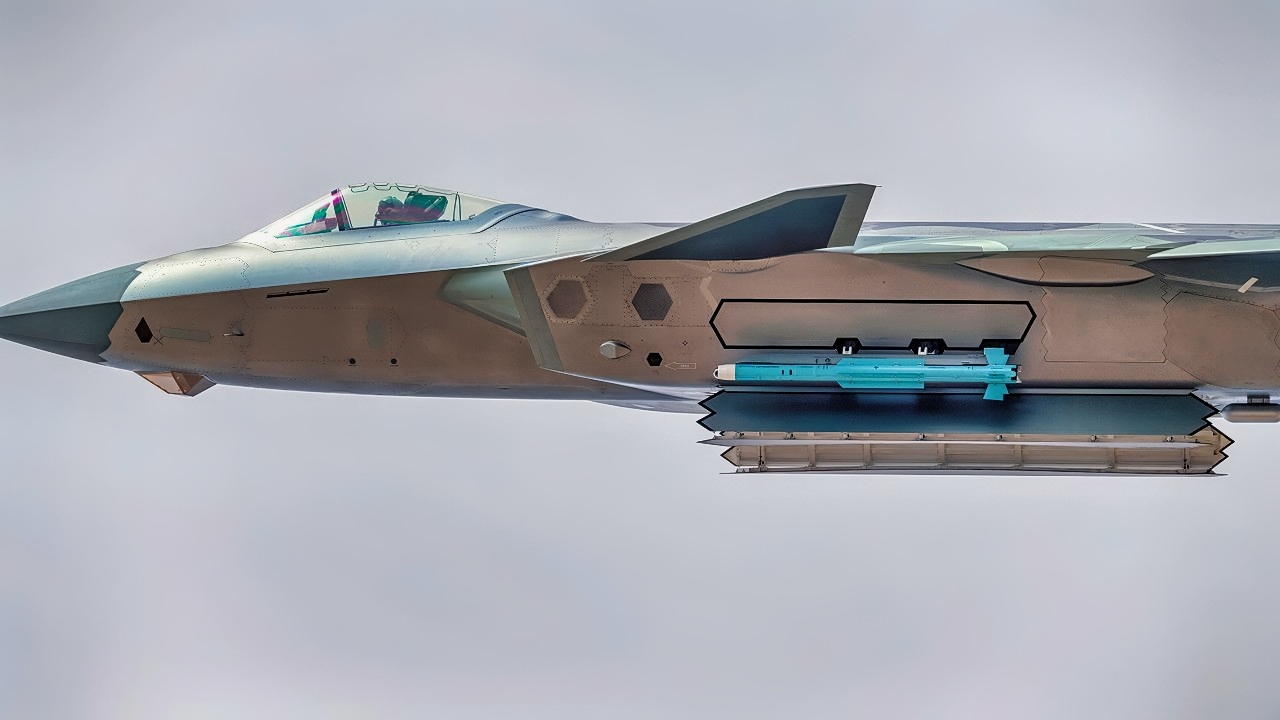
China J-20 Weapons. Image Credit: Chinese Weibo.
If the Raptor fights with F-35s, AEGIS ships, and standoff jammers, the pendulum swings back. And then there are numbers: China is building more J-20s every year, pushing toward a scale that changes planning math for any opponent, even if each jet isn’t a one-for-one Raptor match.
Bottom Line on F-22 vs. J-20
The F-22 remains the better knife in a fair knife fight—stealthier all-around, more athletic, and combat-system mature.
The J-20 is the better spear in a phalanx—longer reach, growing in numbers, and increasingly tied into a kill web that aims to win before the merge. In the end, victory won’t belong to a shape in the sky but to the side that fuses jets, sensors, and missiles into a coherent plan—and executes first.
About the Author: Harry J. Kazianis
Harry J. Kazianis (@Grecianformula) is Editor-In-Chief and President of National Security Journal. He was the former Senior Director of National Security Affairs at the Center for the National Interest (CFTNI), a foreign policy think tank founded by Richard Nixon based in Washington, DC. Harry has over a decade of experience in think tanks and national security publishing. His ideas have been published in the NY Times, The Washington Post, The Wall Street Journal, CNN, and many other outlets worldwide. He has held positions at CSIS, the Heritage Foundation, the University of Nottingham, and several other institutions related to national security research and studies. He is the former Executive Editor of the National Interest and the Diplomat. He holds a Master’s degree focusing on international affairs from Harvard University.
More Military
The U.S. Air Force’s B-52 Bomber and F-35 Fighter Have A Message for Venezuela
Russia’s Mach 4.3 MiG-41 Stealth Fighter Has a Message for the U.S. Air Force
Forget the F-35: The MQ-25 Stingray Might Be the Navy’s Best ‘Weapon’ Against China
Forget the F-35 of F-47: The GCAP 6th Generation Stealth Fighter Is Coming
U.S. and 9 Allies Just Held a Big Naval Exercise Right on China’s Doorstep


